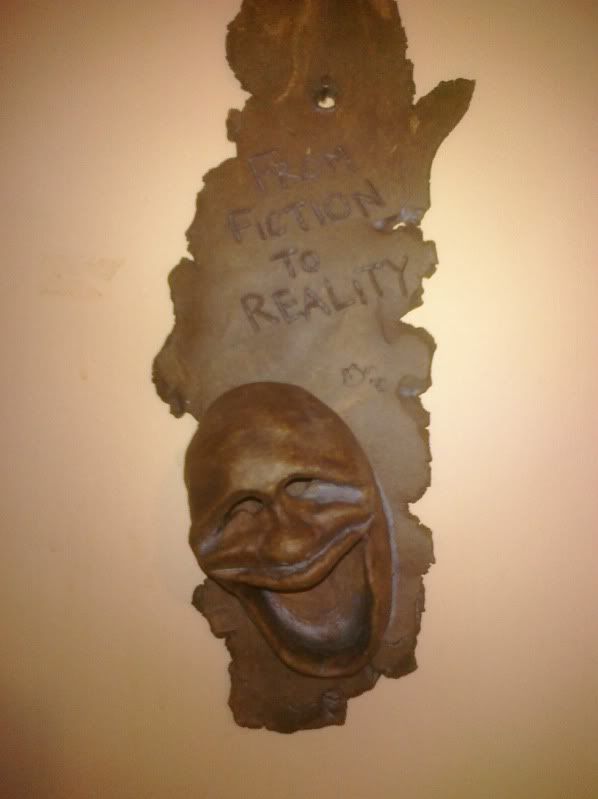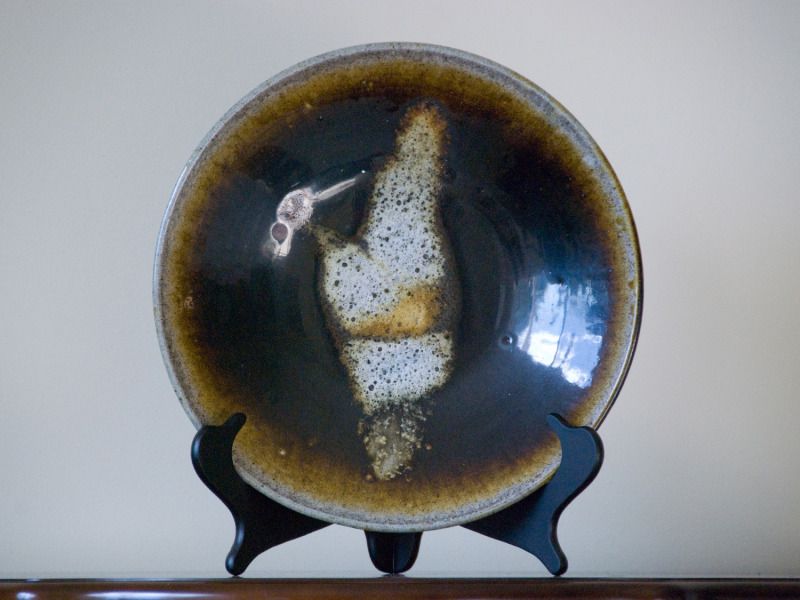
This piece came about during a phase when I grew a bit tired of throwing; sometimes you just have to get off the wheel and do other stuff. So I began making heads, masks, and experimented with facial expressions - mostly smiling faces. One of which you can see on the side of this blog.
So I made this face - drawing inspiration from the Joker:
and the comedy-tragedy masks:
At first I thought about replicating a line by Ella Wheeler Wilcox from her poem 'Solitude':
Laugh, and the world laughs with you;
Weep, and you weep alone;
For the sad old earth must borrow its mirth,
But has trouble enough of its own.
Sing, and the hills will answer;
Sigh, it is lost on the air;
The echoes bound to a joyful sound,
But shrink from voicing care.
Rejoice, and men will seek you;
Grieve, and they turn and go;
They want full measure of all your pleasure,
But they do not need your woe.
Be glad, and your friends are many;
Be sad, and you lose them all,—
There are none to decline your nectared wine,
But alone you must drink life’s gall.
Feast, and your halls are crowded;
Fast, and the world goes by.
Succeed and give, and it helps you live,
But no man can help you die.
There is room in the halls of pleasure
For a large and lordly train,
But one by one we must all file on
Through the narrow aisles of pain.
It's those first couple lines. I've heard them before but never had the impetus to go look it up until it was referenced in the Korean film, 'Old Boy':
Like the Counte of Monte Cristo, the main chracter is locked away without knowing his crime. But in this prison-apartment, there is this picture with the first line from Ella Wilcox's poem (in korean, of course:
The painting is by James Ensor entitled, 'Man of Sorrows'. And one of my first ideas, along with the Joker, was to recreate something like this and use the same line: "Laugh and the whole world laughs with you. Weep, and you weep alone." I liked it but... it was almost a bit too angsty and had a strong existentialist overtone - not that that would be bad or unappealing but it invoked a certain mood from high school and some sculptural work I did then. I wanted to go in a different direction, something that reflected my own thoughts and feelings at the time.
Coincidentally, I watched the anime movie Paprika. Just randomly out of the blue, I thought I'd watch it. If you don't know:
And in this movie, is the line: "From fiction to reality." This was it. I thought it was great as it not only evoked dystopian and utopian imaginations but it also reflected the process of manifesting one's imagination, one's fiction, into a form of reality. From fiction to reality seemed to capture the process of becoming within the creative process. Translating my imagination. It was vague enough to evoke a range of meaning from different perspectives and the smiling face could provide another layer of construction. So I decided to use the phrase and go ahead with making a wall piece.
I was using a clay body called 'Dark Mountain' and had some scraps left over so I used a rolling pin to flatten it out and give it wood-like surface. I scored the bottom and attached the head.
It was my first time using this clay body so I wasn't quite sure how the glazes would turn out. So I decided to go with, what I was doing quite a bit at the time, simply staining the piece with red-iron oxide. Knowing that the clay was rich in iron and adding the stain, also rich in iron, I was told that it would give off a steel-blue-ish, gray-ish color. This was the final product:

When it first came out, I thought it was alright. Some of the things I took away was that while it looked really good laying on the surface of the table, when it hung on the wall the face was tilted a bit too much to the floor. I could have altered it so that it would look a bit more directly at the viewer. I thought th clay body came out really well. The rich brown and the texture was great. Some mixed feelings about the red iron oxide. At any rate, it would be fun to do a series of similar wall pieces and kind of play around with the combinations of face, phrase, font, clay bodies, and different techniques of arrangement. One thing is for sure: just because it looks ok flat on the table, doesn't mean that it will look good on the wall.
At any rate, this was a fun piece, I enjoyed making it.







